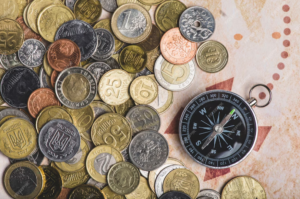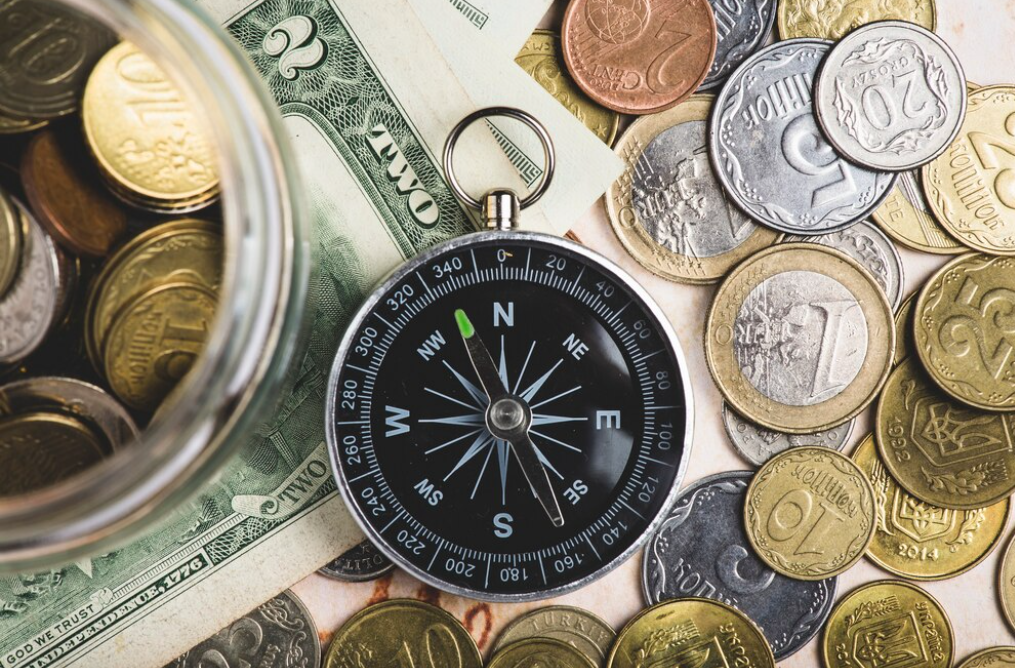-
Mar, Thu, 2024
A Journey Through Time: Exploring the History of Money
Exploring the History of Money: Money, a ubiquitous element in our daily lives, has a rich and fascinating history that spans thousands of years. From the earliest forms of barter to the complex financial systems of the modern world, the evolution of money reflects the progression of human civilization itself. Let’s embark on a journey through time to unravel the captivating history of money.

Exploring the History of Money
1. The Origins of Barter: Long before the invention of coins or paper currency, people relied on barter as a means of trade. Barter, the direct exchange of goods and services without the use of money, was likely one of the earliest forms of economic exchange. In ancient societies, individuals would trade items they had for items they needed, establishing a primitive system of commerce.
2. The Emergence of Commodity Money: As societies grew more complex, the limitations of barter became evident. The need for a more efficient medium of exchange led to the emergence of commodity money. Commodity money is a form of currency that has intrinsic value, such as gold, silver, or grains. These commodities were widely accepted in trade due to their scarcity and utility, laying the foundation for early economies.
3. The Birth of Coinage: The transition from commodity money to standardized coins marked a significant milestone in the history of money. The Lydians, an ancient civilization in Asia Minor, are credited with producing the first minted coins around 600 BCE. These coins were made from precious metals like gold and silver and bore markings to denote their value and authenticity. The introduction of coinage revolutionized trade by providing a portable and universally recognized form of currency.
4. Paper Money and the Rise of Banking: While coins remained the primary form of currency for centuries, the development of paper money transformed the landscape of finance. The use of paper currency originated in China during the Tang Dynasty (618-907 CE), where merchants began using receipts for deposits as a convenient alternative to carrying heavy coins. Over time, these paper receipts evolved into government-issued banknotes, which were backed by precious metals or other assets.
5. The Age of Exploration and Global Trade: The Age of Exploration during the 15th and 16th centuries spurred a wave of global trade and commerce. European explorers like Christopher Columbus and Vasco da Gama ventured to distant lands in search of new trade routes and valuable resources. This era saw the rise of international banking institutions, such as the Medici Bank in Italy, which facilitated trade through the issuance of letters of credit and bills of exchange.
6. The Gold Standard and Fiat Currency: In the 19th century, many countries adopted the gold standard, which pegged the value of their currencies to a specific quantity of gold. Under the gold standard, paper money could be exchanged for gold at a fixed rate, providing stability to financial systems. However, the gold standard began to decline in the 20th century, and most nations transitioned to fiat currency, where the value of money is derived from government decree rather than a tangible asset.
7. Digital Currency and the Future of Money: In recent years, technological advancements have given rise to digital currencies like Bitcoin and Ethereum. These cryptocurrencies operate independently of traditional banking systems and offer a decentralized means of conducting financial transactions. While still in its infancy, the growing popularity of digital currency has sparked debates about the future of money and the role of technology in shaping economic systems.
The history of money is a testament to human ingenuity and innovation. From the primitive beginnings of barter to the digital revolution of cryptocurrencies, the evolution of money mirrors the evolution of society itself. As we continue to navigate the complexities of global finance, understanding the origins and development of money provides valuable insights into the forces that shape our economic landscape.

The history of money
9. Sustainability and Ethical Considerations: In recent years, there has been a growing emphasis on sustainability and ethical considerations in finance. Investors are increasingly prioritizing environmental, social, and governance (ESG) factors when making investment decisions, reflecting a broader shift towards responsible investing. This trend highlights the interconnectedness between financial markets and broader societal issues.
10. Regulatory Responses and Policy Implications: In response to the evolving landscape of finance, regulators and policymakers are grappling with new challenges and opportunities. Striking the right balance between innovation and stability remains a key priority, with regulators seeking to foster innovation while safeguarding financial stability and consumer protection. Additionally, policymakers are exploring ways to address emerging risks such as cyber threats and digital currency regulation.
11. The Role of Education and Awareness: As financial systems become increasingly complex, there is a growing need for financial education and awareness. Empowering individuals with the knowledge and skills to navigate the intricacies of modern finance is essential for promoting financial inclusion and resilience. Educating consumers about topics such as budgeting, saving, investing, and avoiding financial scams can help build a more financially literate society.

12. Collaboration and Innovation: Addressing the challenges of modern finance requires collaboration and innovation across sectors. Public-private partnerships can facilitate information sharing, coordination, and capacity building, enhancing the resilience of financial systems. Furthermore, fostering a culture of innovation and entrepreneurship can spur the development of new technologies and business models that address emerging needs and opportunities.the history of money is a testament to human ingenuity, innovation, and resilience. From the earliest forms of barter to the digital currencies of the 21st century, the evolution of money reflects the ever-changing needs and aspirations of society. As we navigate the complexities of modern finance, it is essential to draw upon the lessons of the past while embracing the possibilities of the future. By fostering collaboration, innovation, and financial literacy, we can build a more inclusive, sustainable, and resilient financial system for generations to come.By examining the history of money, we gain a deeper understanding of its role in shaping economies, societies, and cultures. From the simple exchange of goods and services to the sophisticated financial systems of today, money has played a central role in human civilization. As we look to the future, it is essential to reflect on the lessons of the past and consider how we can continue to innovate and adapt in the ever-evolving landscape of finance.


